 cse4k12.org/crossbin/instructions.html
cse4k12.org/crossbin/instructions.html
Crossbin puzzles are similar to crossword puzzles except that:
Also, once the puzzle is complete, if you fill all the '1' squares with black you will see a small picture or pattern.
Given the hexadecimal clues and a conversion chart like the following:
| Hex | Binary | Hex | Binary | Hex | Binary | Hex | Binary |
| 0 | 0000 | 4 | 0100 | 8 | 1000 | C | 1100 |
| 1 | 0001 | 5 | 0101 | 9 | 1001 | D | 1101 |
| 2 | 0010 | 6 | 0110 | A | 1010 | E | 1110 |
| 3 | 0011 | 7 | 0111 | B | 1011 | F | 1111 |
You can calculate the answer using the chart and then enter the binary digits into the crossbin squares.
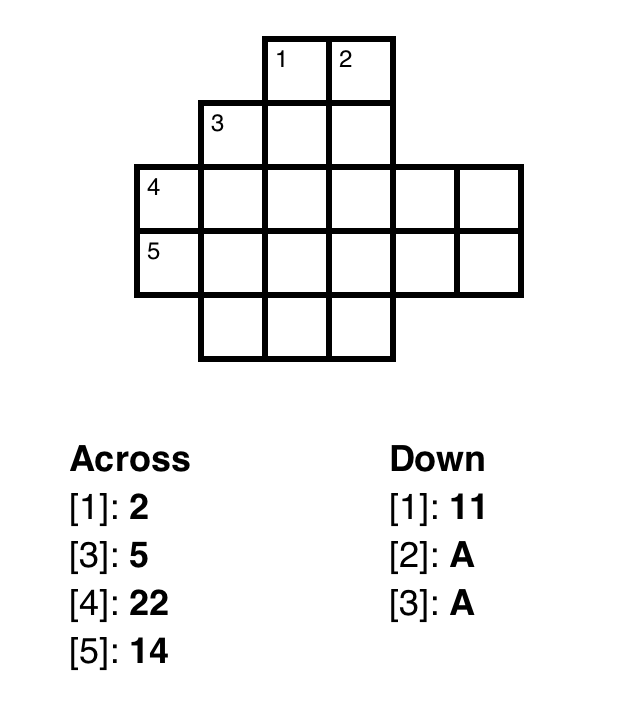
The first Across clue is hexadecimal "2", which (according to our conversion chart) is "0010" in binary so that's the answer we need to insert in the puzzle.
We only have 2 squares in which to write our (4-digit) answer, but that's OK because any '0's at the beginning of the number can be removed. So we chop off the "00" at the beginning and insert "10" into the puzzle:
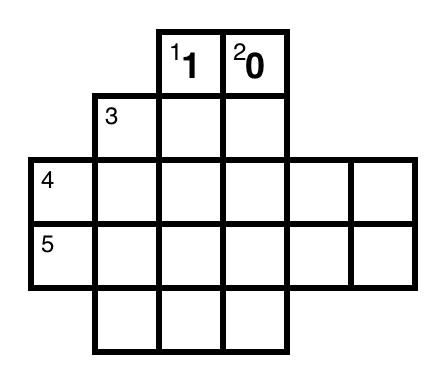
Next, let's look at the first Down clue: "11".
This is a 2-digit hexadecimal number that we need to convert to binary. We do this by converting each digit separately and combining the result:
We only have 5 squares, so we chop off the three '0's on the left and insert "10001" into the puzzle:
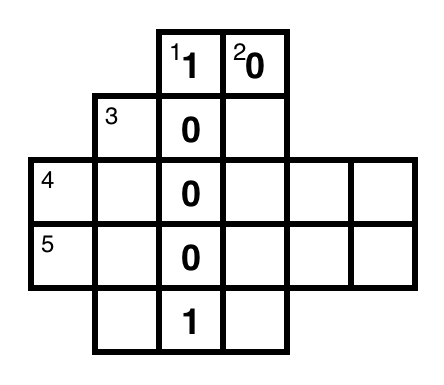
If we next do [5] Across, we have a clue of "14" which becomes "00010100" ("0001" + "0100") in binary.
To fit this in the 6 available squares, we chop off 2 of the three '0's at the beginning to produce the answer: "010100".
Note that it's OK for crossbin puzzle answers to begin with a '0'.

Looking at [2] Down, we have a clue of "A" which is "1010" in binary.
But we have 5 squares in which to write the answer. Just like it is OK to remove '0's at the beginning of the number, it is also OK to add '0's to at the beginning. So we change "1010" to "01010" and write that as our answer:
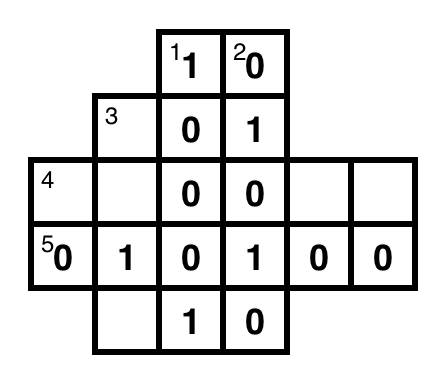
Continuing this process, you can complete the puzzle:
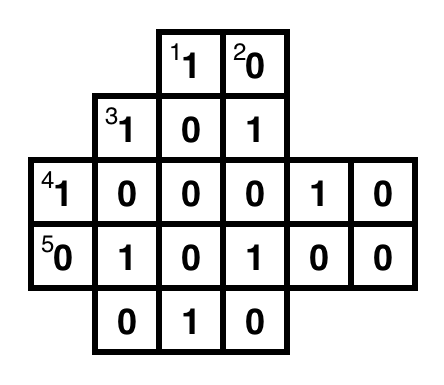
Once this is done, you can fill all the '1' squares with black (and erase the '0' squares if you like) to produce the final image:

In this case, it's a simple diamond pattern – real puzzles will have (hopefully) more interesting results.
Basic crossbin puzzles provide the clues as simple hexadecimal numbers, but more difficult puzzles will require more work to calculate the answer.
For example, instead of a simple clue like:
[3]: A
You might see:
[3]: F - 5
or perhaps even something like:
[3]: ((6 << 1) & B) | 2
!!!